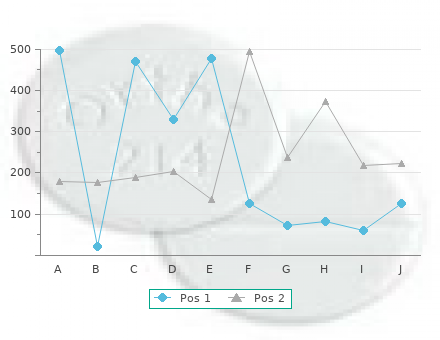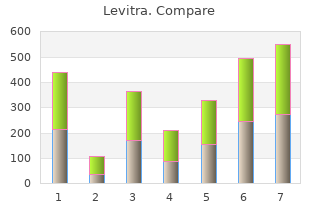Levitra
2018, Dana College, Stejnar's review: "Levitra generic (Vardenafil) 20 mg, 10 mg. Only $0,9 per pill. Discount online Levitra no RX.".
Synovitis means inflammation of the synovial membrane (living of a joint capsule) purchase levitra 20mg without prescription erectile dysfunction treatment calgary. Arthritis may be caused by bacteria (infective arthritis) 10mg levitra for sale erectile dysfunction operations, rheumatoid arthritis, gout and pseudogout, osteoatrhtitus 3. The term pleural effusion is used to describe a non-purulent serous effusion which sometimes forms in pneumonia, tuberculosis, malignante disease etc Empyema is used to describe a purulent pleural effusion when pus is found in the pleural space. Peritonitis means inflammation of the peritoneum, which is the serous membrane that lines the peritoneal cavity. Ascites refers to the accumulation of fluid in the pentional cary causing abdominal swelling. Commensales No microbial flora Collection is carried out by a medical officer - 2-3ml without anticogulent, to see whether clotting occurs. Staphylococcus warneri • Can readily grow in ordinary media under aerobic and micro- aerophilic conditions • grow most rapidly at 37 0c but form pigment best at room temperature of 20-25 oc • Colonies in solid media are round, smooth, raised and glistening. Peptidoglycan( Mucopeptide): Polysaccharide polymer which provide the rigid exoskeleton of the cell wall. It is important in the pathogenesis of infection like eliciting production of cytokines and opsonic antibodies; chemoattractant for polymorphs;and activate complement 2. Catalase- Produced by staphylococci Converts H202 into H20 and 02 175 Catalase test differentiates staphylococci(catalase-positive) from streptococci(catalase-negative). Coagulase may deposit fibrin on the surface of organism and alter ingestion by phagocytic cells. Clumping factor: A surface compound that is responsible for adherence of the organism to fibrinogen and fibrin Produced by Staphylococcus aureus Determines Invasive potential of the organism. Multiple (A-E, G-I, K-M) soluble heat-stable, gut enzyme resistant toxins which act on neural receptors 176 in the gut to stimulate vomiting center in the central nervous system. Epidermolytic toxin A: Chromosomal gene product and heat stable Epidermolytic toxin B: Plamid mediated and heat labile. Endocarditis and meningitis: Infection of heart tissue and leptomeninges respectively. Characterized by abrupt onset of high fever, vomiting, diarrhea, myalgia, scarlatiform rash,and hypotension with cardiac and renal failure in the most severe disease. Catalaseproducing Bacteria (Staphlococci) No active bubbling…………Non-catalase producing bacteria (streptococci) 2. Serologic specificity of the cell wall group specific substance and other cellwall capsular antigens 3. Partial Greenish discoloration Alpha(α) Viridans streptococci (reduced hemoglobin). None No change Gamma(δ) Enterococci Lancefield grouping of streptococci: Streptococci produce group specific carbohydrates(C carbohydrates) identified using group specific antiserum. Group-specific cell wall antigen Streptococcal cell wall obtained carbohydrate is the basis for serologic grouping of streptococci (Lancefield groups A-H, K-U) 183 2. M protein They are found in hair-like projections of the streptococcal surfaceand determine virulence Major virulent factor for group A streptococci. T substance: Acid and heat labile unlike M protein, and has no relation to virulence of streptococci. R protein Streptococcus pyogenes (Group A β-hemolytic streptococci) The most pathogenic member of the genus It is present as a commensal in the nasopharynx in a variable proportion of healthy individuals. It is an active proteolytic enzyme which lyses fibrin by catalytic conversion of plasminogen to plasmin. Has been given intravenously for the the treatment of pulmonary edema and of arterial and venous thrombosis 2. Streptodornase: Streptococcal deoxyribonuclease 184 Mixtures of streptokinase and streptodornase are used in “enzymatic debridement” 3. Hyaluronidase: Spreading factor It degrades the ground substance of connective tissue (hyaluronic acid) and aids in spreading infectious micro- organoism 5. Hemolysins: Two types Streptolysin O and Streptolysin S Antistreptolysin O antibody titer > 1:200 todd: Supportive evidence for Acute reheumatic fever 2.


Use closed suction drains when drainage is necessary generic levitra 20 mg without prescription impotence from prostate surgery, placing the drain through a separate incision distant from the operative incision purchase 10 mg levitra visa thyroid causes erectile dysfunction. Wash hands before and after dressing changes and any contact with the surgical site. Educate the patient about surgical site infections, relevant symptoms and signs, and the need to report them if noted. Principles of Infection: Prevention and Treatment 105 had a recent attack of cholecystitis, suspected cholangitis, or common duct stones, are elderly (>70 years of age), or have diabetes, prophy- lactic antibiotics are used. The patient presented in Case 1 would benefit from prophylactic antibiotics based not only on the suspicion of common duct stones as evidenced by the elevated bilirubin, but also on the fact of the current attack of pain. It is controversial whether both intravenous and oral antibiotics should be given. Some evidence suggests that there is a slightly lower infection rate when antibiotics are given by both routes. In urologic surgery, prophylactic antibiotics should be given when a urinary catheter is in place or if the urine is culture-positive. The drug of choice is ciprofloxacin, since it is well concentrated in the urine and covers the enteric gram-negative bacilli, which are the common pathogens. Culture results should direct appropriate prophylaxis if resistant organisms are identified. When performing a transrectal prostate biopsy, prophylaxis with antianaerobic coverage needs to be given. Similarly, head and neck surgery generally does not require prophylactic antibiotics unless the sinuses, nasal, oral, pharynx, or hypopharynx is entered. In patients undergoing gastric surgery for an obstructive stomach, a bleeding ulcer, or gastric cancer, prophylactic antibiotics need to be considered carefully. Since gastric cancer is known to spread to con- tiguous organs, the possibility of a colon resection needs to be consid- ered. Patients should have a mechanical bowel preparation with appropriate antibiotics prior to surgery. In addition, a patient with an obstructing gastric cancer would require antibiotic coverage of anaer- obic and aerobic colonization of the stomach. When surgery is confined to the upper gastrointestinal tract for benign peptic ulcer disease, the patient would need antibiotics covering only the aerobic flora. It should be remembered that the stomach poses as a barrier to bacterial colo- nization of the small intestine, so that when gastric pH increases as a result of antacid therapy, bacterial overgrowth occurs. A single dose of prophylactic antibiotics to cover gram-negative and gram-positive flora is considered appropriate. For surgery of the small intestine, such as for Crohn’s disease or primary tumors of the small bowel, a single dose of an antibiotic to cover the gram-negative aerobes is appropriate. When the stomach or small intestine is obstructed, the flora changes dramatically so that 1 mL of small bowel contents contains the same density of aerobic and anaerobic bacteria as 1mL of feces. Antibiotics, therefore, need to be altered appropriately to include coverage against anaerobes. Contaminated Cases The difference in the management of patients with contaminated abdominal wounds compared to patients with dirty wounds is that in contaminated wounds there is bacterial soilage even though there is no active infection. For example, in a patient with a penetrating abdominal wound with injured bowel, a short course of antibiotics (two to three doses) is as effective as longer therapy. Evidence indicates that shortened administration of perioper- ative antibiotics reduces the infection rate without increasing the emer- gence of resistant organisms. In addition, a short course of antibiotics reduces the incidence of side effects from the antibiotics. Dirty Cases When pus is encountered during an intraabdominal operative pro- cedure, prolonged antibiotic therapy is advised in order to contain the cellulitic component of the infectious process. Standard drug reg- imens are recommended for uncomplicated infections that arise outside of the hospital setting. Second-generation cephalosporins, cefoxitin, cefotetan, and ticarcillin-clavulinic acid are safe single-agent drugs that are extremely effective against most community-acquired infections. These agents all are derived from penicillin, and therefore carry the risk of an allergic reaction in patients who are allergic to penicillin. If the patient has a history of a serious penicillin allergy or an imme- diate anaphylactic reaction, a combination of antibiotics may be used (Table 6. Perhaps, more importantly, it has been recognized that this gentamicin has an altered volume of distribution and an altered half- life in the septic patient.

The theory of psychological reactance becomes operational as the client attempts to regain control over the lost freedom and restricted behaviors imposed upon them buy levitra 10 mg fast delivery erectile dysfunction lab tests. Client adherence issues began to surface when the perceived freedom is restricted or threatened with elimination and the client becomes reactant to treatment regimen order levitra 10mg mastercard erectile dysfunction age 16. The restriction of free choice becomes a control issue for the client whose desire or motivation is to protect their sense of freedom. The motivational state of the client yields a response of reactance in an attempt to regain control (Christensen, 2004). Although psychological reactance theory has rarely been used in nursing, the implication of high reactance levels and loss of control to medication adherence warrants further study, especially in Black women. Psychological reactance may be relevant to Blacks because of their history of slavery and oppression. Because of the lingering effects of their historical legacy, Blacks tend to view freedom from a different perspective than other races. Reactance to potential 58 restrictions or threats to eliminate freedoms may contribute to physiological tension and psychological pressure with changes in perceptions and judgments (J. The historical legacy of slavery and its lingering effects places Black clients in a unique position to protect and safeguard their personal freedoms. Woller, Buboltz, and Loveland (2007), noted that highly reactant individuals are likely to experience anxiety and are distrustful of others. Further, Palmentera (1996) stated that reactant individuals demonstrated more stress, hostility, and emotion-focused coping styles with feelings of self-deprecation linked to depressive symptoms. Thus, the psychological ramifications of highly reactant behaviors may hinder therapeutic relationships with health care providers (Seemann, Buboltz, Jenkins, Soper, & Woller, 2004) and impede adherence to the treatment regimen, especially medication-taking (Christensen, 2004). Blacks had higher levels of reactance than Whites on the verbal, behavioral, and total therapeutic reactance scale. Woller, Buboltz, and Lovelace (2007) further stated that differences in reactance levels for minority groups may result from disparate environmental opportunities related to discrimination that restricts free behavior, especially for Blacks and Hispanic/Latinos. Thus, reactance behaviors experienced in society may be generalized to relationships with health care providers implementing the treatment regimen. The vast amount of literature on lack of compliance and adherence attest to the continual resistance of individuals to taking medications, even though they may receive pertinent information, interventional strategies, and admonishments (Fogarty, 1997; Pound et al. Several authors contend that because varying degrees of resistance exist and are usually hidden from health care providers, it is highly unlikely that individuals will stop resisting prescribed medications (Fogarty, 1997; Pound et al. Intrinsic motivation as described by Cox and Brehm‘s reactance theory may provide insight into factors that promote adherence behaviors. The rationale for reactant behaviors and resulting resistance to the treatment regimen, particularly medication- taking, warrants further exploration. Cognitive appraisal provides insight into the client‘s perceptions and interpretation of his or her health status, behavioral choices, and interaction with the health care provider (Cox, 1982). Importantly, the client‘s perceptions and interpretations are representative of his or her reality and may or may not reflect that of the health care professional (Carter & Kulbok, 1995; Cox, 1982). While educational information is usually beneficial for individuals who are motivated to adhere to the treatment regimen but unlearned in regimen process, individuals unmotivated in adherence and already knowledgeable are unlikely to improve with additional educational information (Becker, 1985). Thus, client education is essential, although its effectiveness may be questioned, especially when intrinsic motivation is lacking. Becker (1985) asserts that providing information to clients about diagnosed illnesses and prescribed treatments have not increased adherence. However, literacy was not reported as an issue in this study even though over 45% of the sample had less than a high school education. Literacy issues may be one of the primary reasons for uncertainty of educational effectiveness. Low literacy levels can result in difficulty understanding health information, accessing health care, following instructions from a health care provider, and taking medications correctly; all of which 62 contribute to poor adherence to the treatment regimen, uncontrolled chronic disease, and increased health care costs (Safeer & Keenan, 2005). Milio (1976) exerts is that it is not enough to make clients knowledgeable about healthy lifestyle choices without assuring that clients have ready access to the treatment options promoted. If health care providers adequately assess clients prior to implementing treatment and allow clients an opportunity to exert control over determining optimal health for themselves, then the actions necessary to attain their health status could be implemented according to the client‘s environmental limitations (Carter & Kulbok, 1995; Cox, 1982). Adequate assessment of the client‘s ability to practice positive health behaviors within the environmental resources available may provide a realistic expectation for the client to succeed in adhering to the health care regimen and allow the health care provider an opportunity to individualize the health care regimen, thus making adherence a viable possibility.
Levitra
9 of 10 - Review by G. Kerth
Votes: 203 votes
Total customer reviews: 203 |



